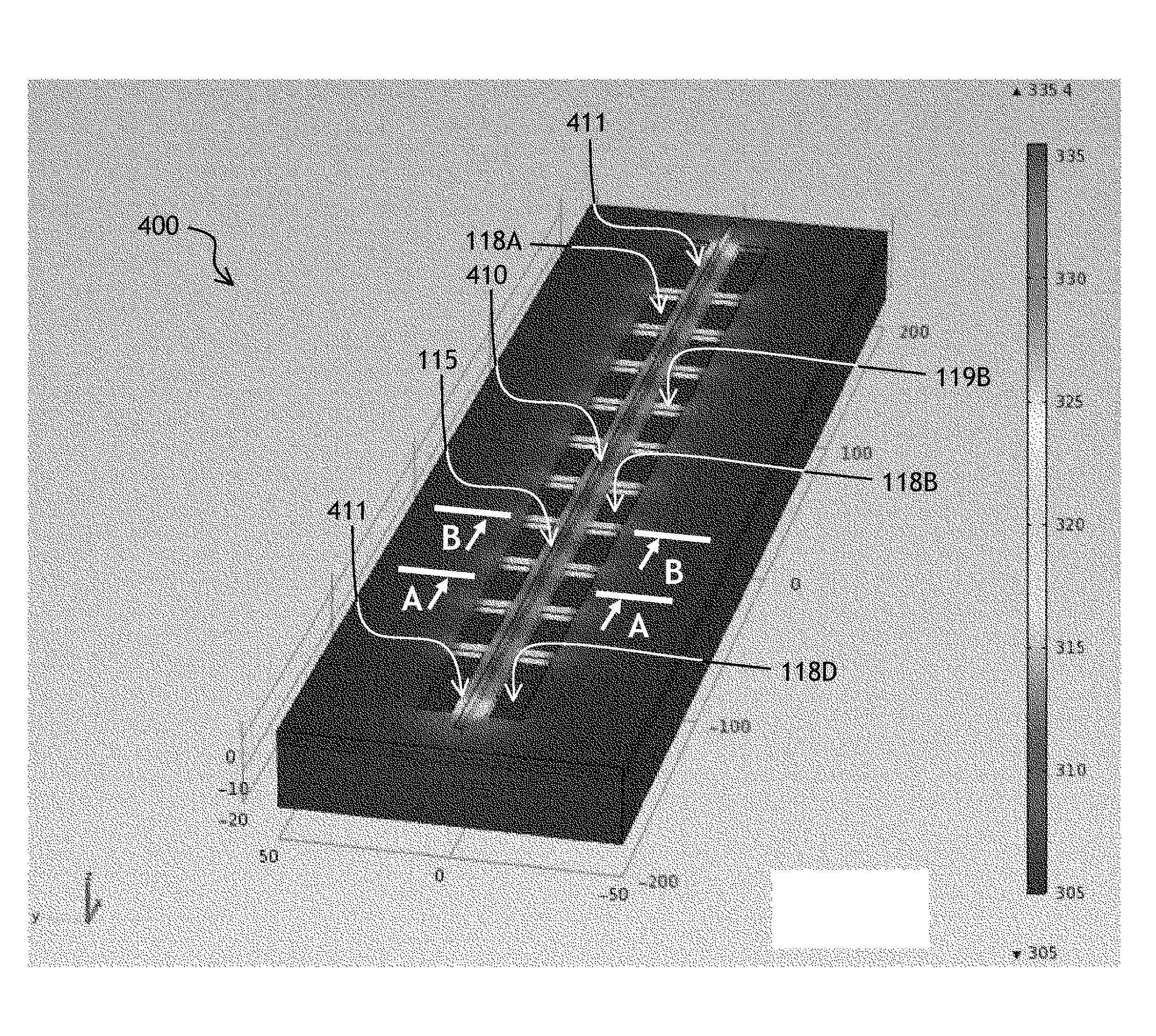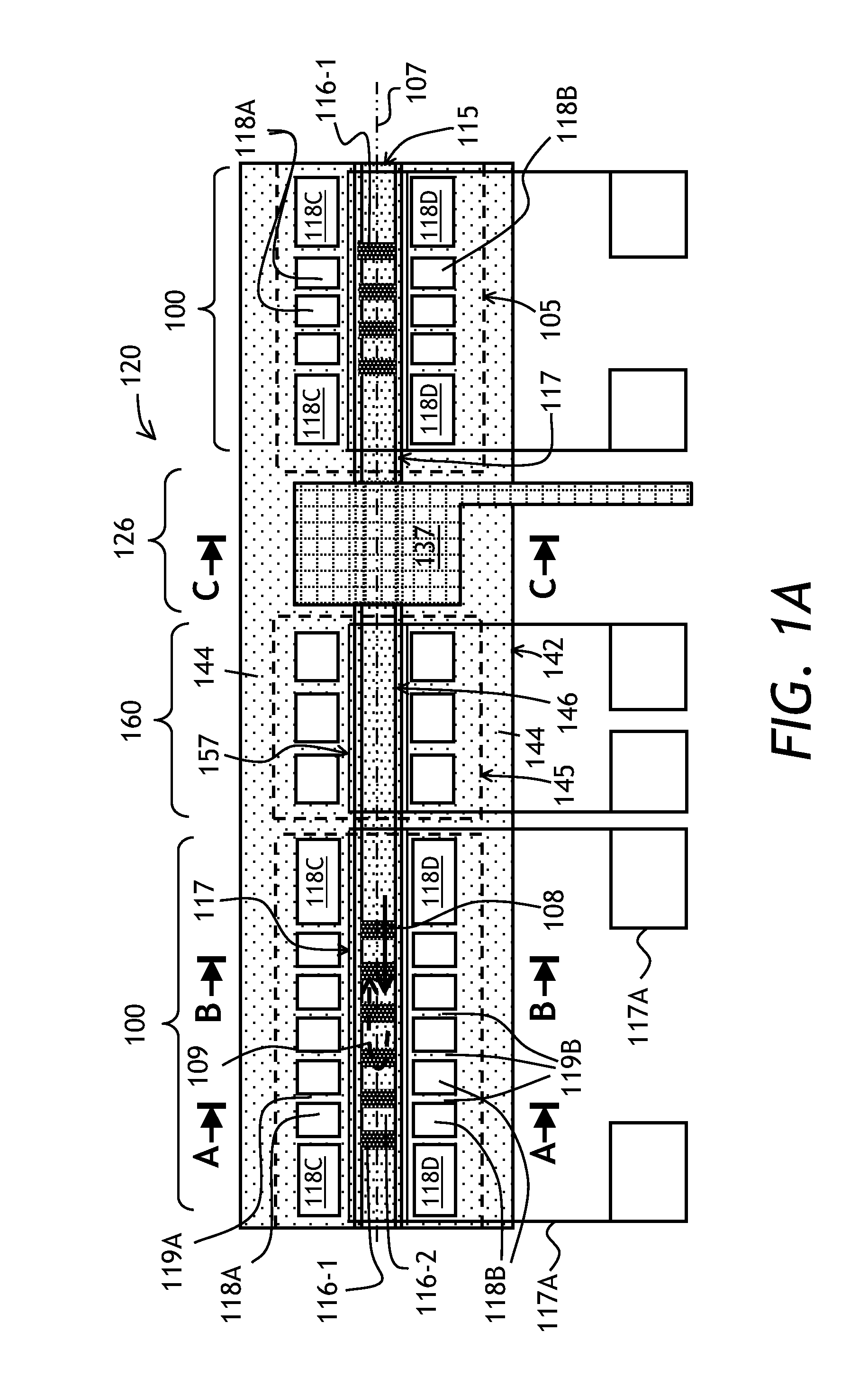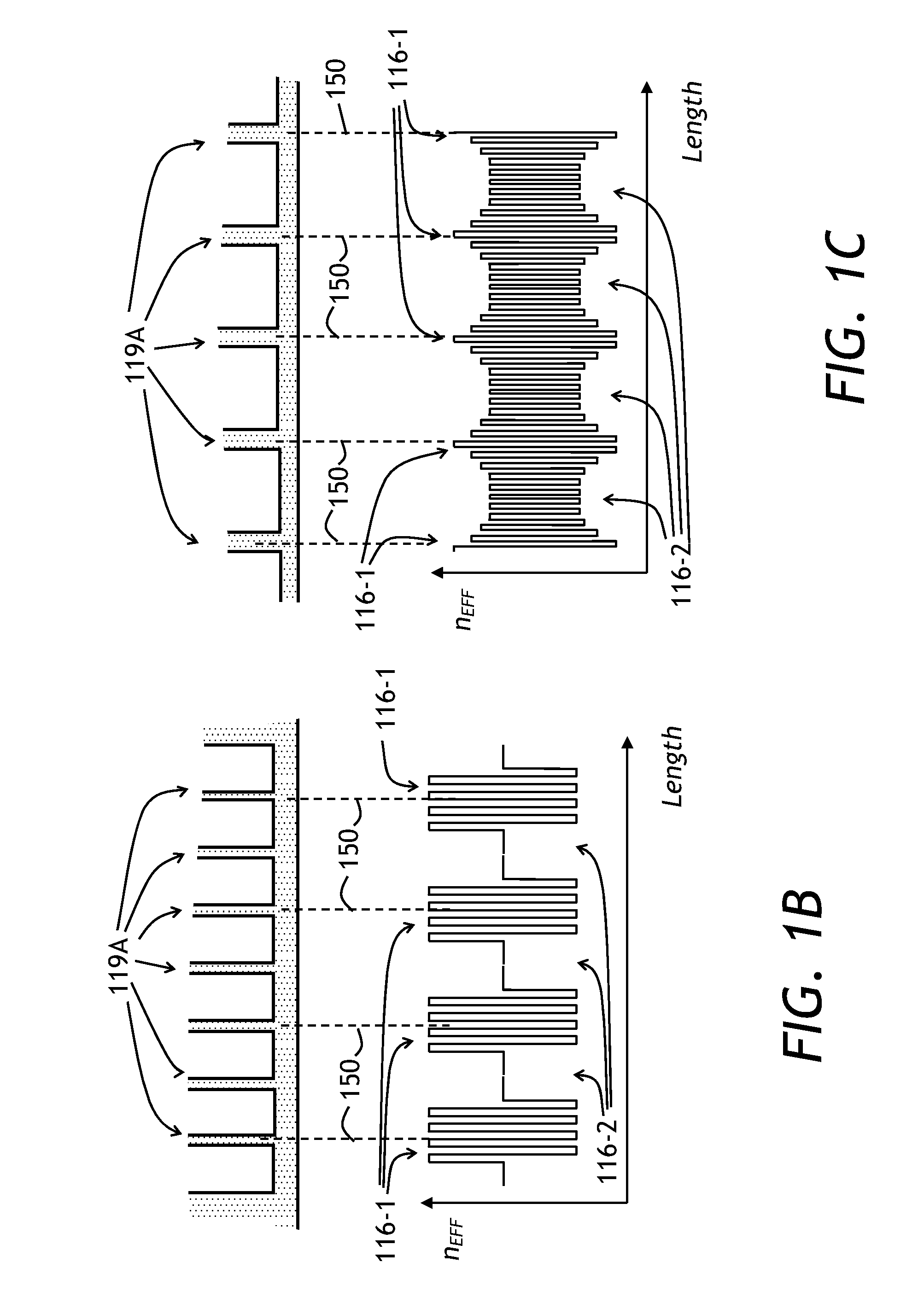Tunable bragg grating and a tunable laser diode using same
a laser diode and bragg grating technology, applied in the field of optical waveguides and lasers, can solve the problems of affecting the efficiency of laser light generation, affecting the temperature of lasing p-n junction, and affecting the emission spectral linewidth of the laser, so as to achieve simple and efficient structure
- Summary
- Abstract
- Description
- Claims
- Application Information
AI Technical Summary
Benefits of technology
Problems solved by technology
Method used
Image
Examples
embodiment 320
[0060]Turning now to FIGS. 3A and 3B with further reference to FIGS. 1A and 2A to 2C, an embodiment 320 of the SG-DBR laser 120 of FIG. 1A includes two tunable DBR sections 100, the phase section 160, the gain section 126, and an amplifier section 300 formed within a common shallow-ridge waveguide 306 suspended over the common substrate 122 at the tunable DBR sections 100 and the phase section 160. A back-facet absorber section 301 is provided for absorbing laser light at the left-hand side of the waveguide 306 in FIG. 3A, to prevent light reflected from a left facet 310 of the shallow-ridge waveguide 306 to interfere with light selectively reflected by the left tunable Bragg grating 100. A common backplane electrode 302 is electrically coupled to a back side of the substrate 122. The gain section 126 is powered with the first electrode 137, and the amplifier section 300 is powered by a second electrode 337 or providing electrical current to the amplifier section 300. The first and ...
embodiment 400
[0061]In a preferred embodiment, the resistive heaters 117 of the tunable Bragg gratings 100 are uniform thin-film resistive heaters applied to the ridge 115 of the ridge waveguide 106, with current passing along the length of the heater 117 between two contact pads 117A. A passivating layer of dielectric is disposed between the thin-film heater 117 and the underlying ridge waveguide 106. Referring to FIGS. 4, 5A, and 5B, with further reference to FIGS. 1A, 2A to 2C, 3A, and 3B, a numerical simulation has been performed for an embodiment 400 of the tunable Bragg grating 100 having the uniform heater 117 (not shown in FIG. 4) running along the ridge 115. Positions, lengths, and widths of the openings 118A to 118D are selected so as to create a substantially uniform temperature distribution along the ridge 115. The positions, lengths, and widths of the openings 118A to 118D define lengths and widths of the heat conducting fingers 119A and 119B. As seen in FIG. 4, the openings 118A and...
PUM
 Login to View More
Login to View More Abstract
Description
Claims
Application Information
 Login to View More
Login to View More - R&D
- Intellectual Property
- Life Sciences
- Materials
- Tech Scout
- Unparalleled Data Quality
- Higher Quality Content
- 60% Fewer Hallucinations
Browse by: Latest US Patents, China's latest patents, Technical Efficacy Thesaurus, Application Domain, Technology Topic, Popular Technical Reports.
© 2025 PatSnap. All rights reserved.Legal|Privacy policy|Modern Slavery Act Transparency Statement|Sitemap|About US| Contact US: help@patsnap.com



